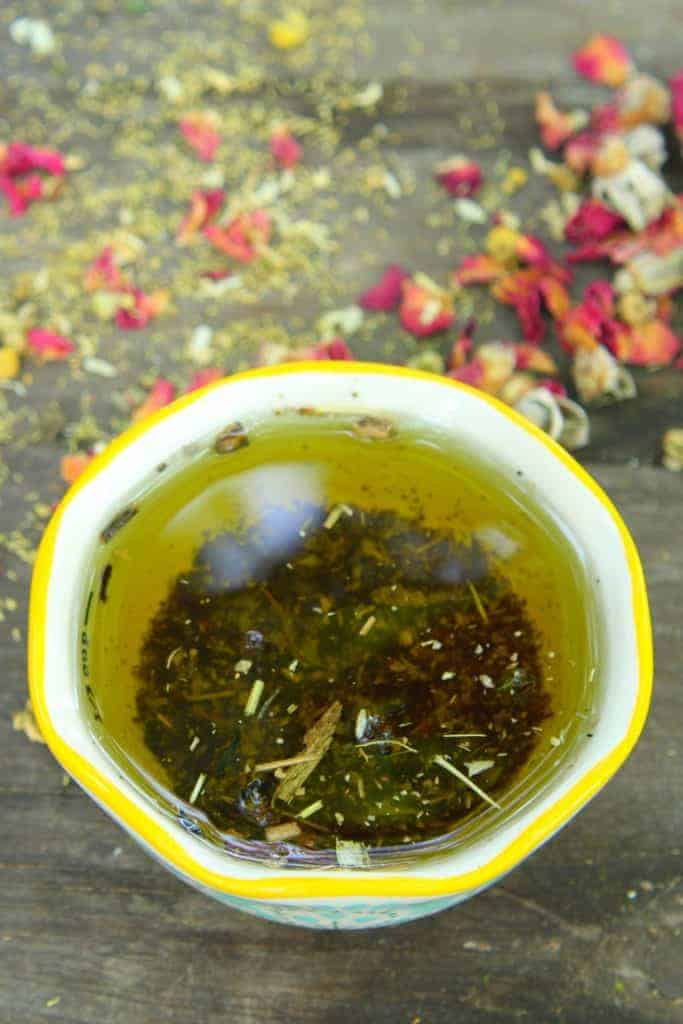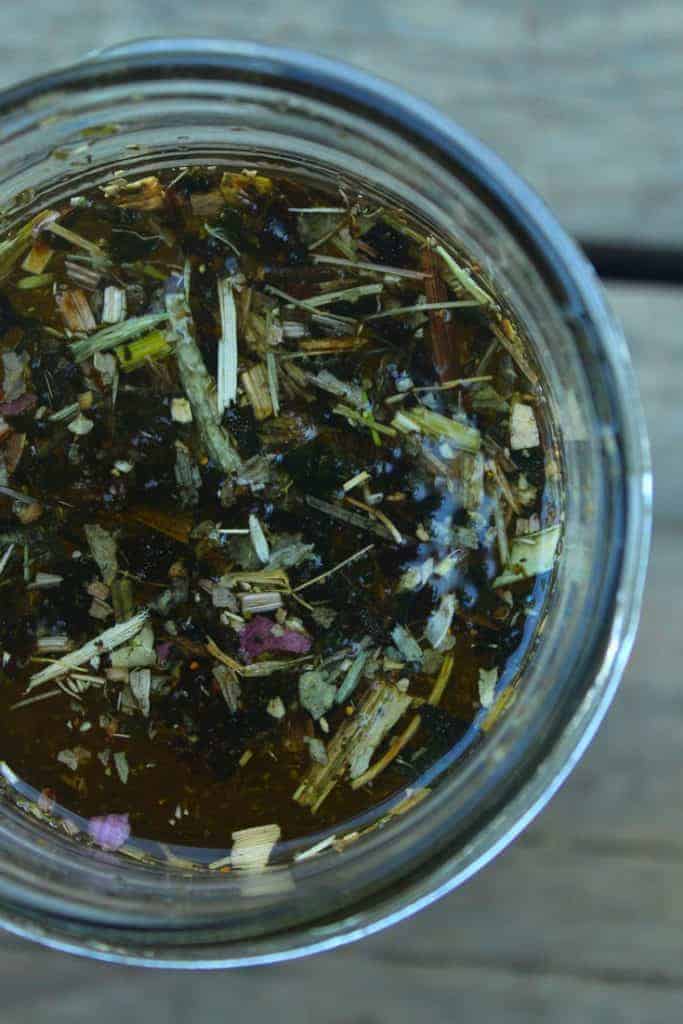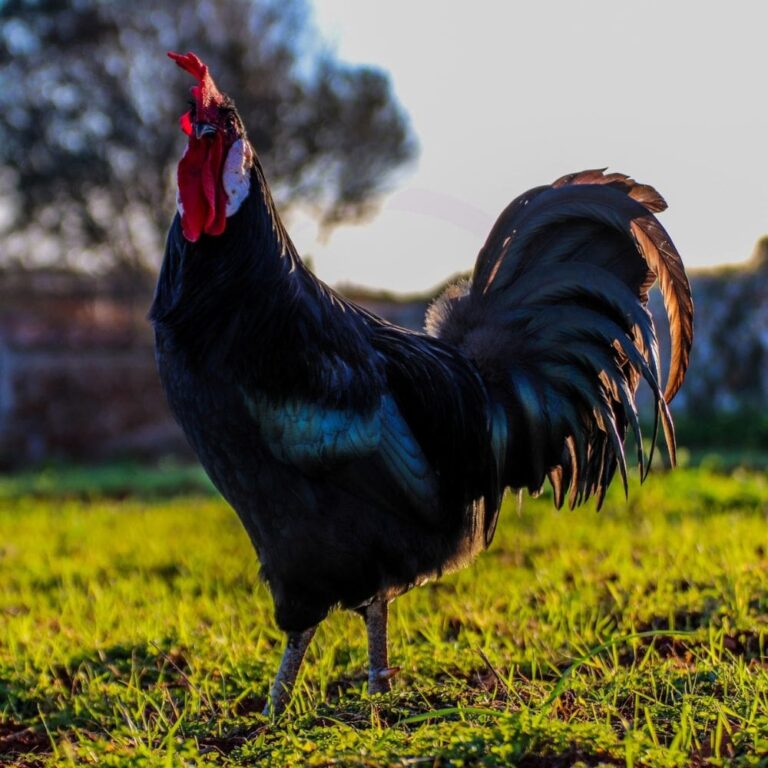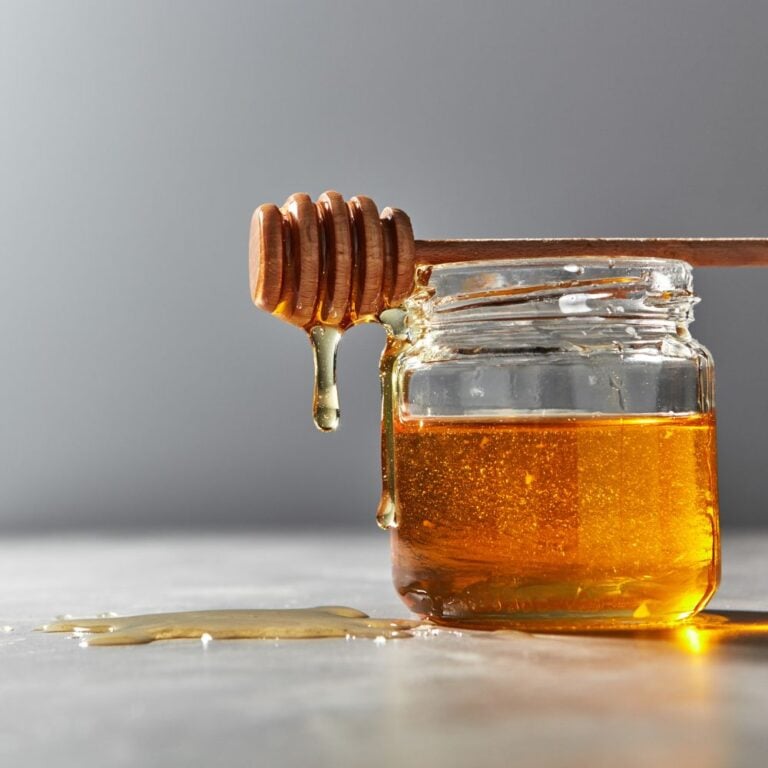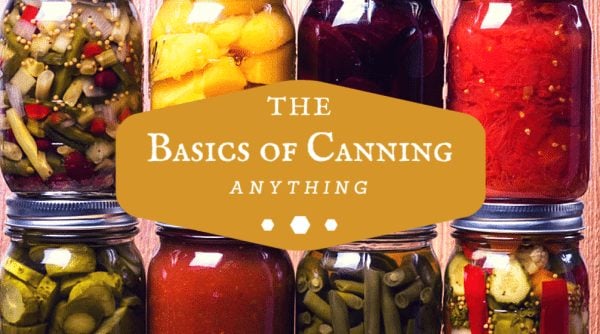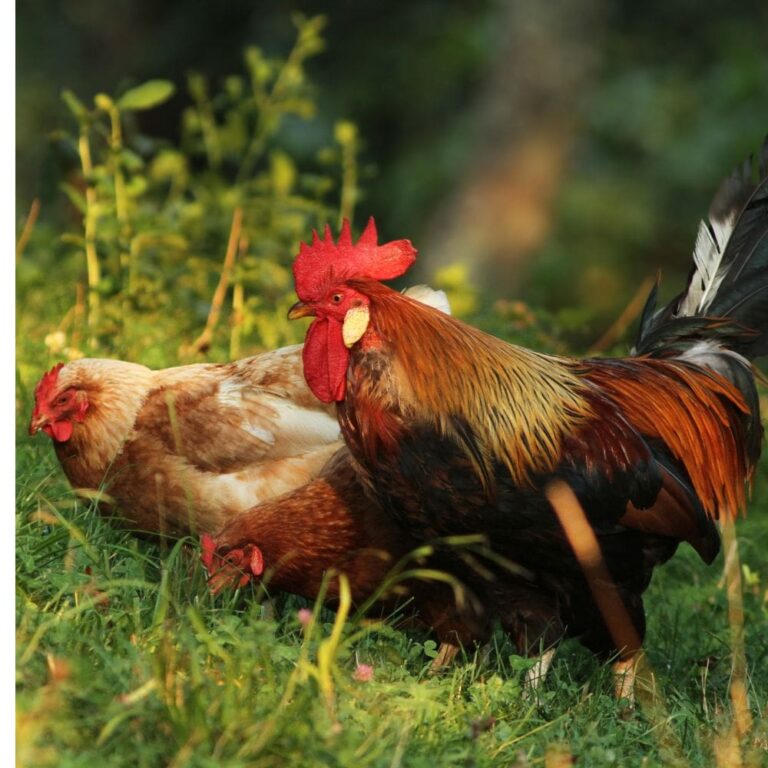Wondering how to infuse oil with herbs? It’s really simple – and incredibly useful.
For millennia, humans have used herbs for all kinds of things – health, cooking, for religious purposes, keeping livestock healthy, and more. So, it’s nothing new to infuse oil with herbs for your own purposes.
And there’s a reason for our species dependency on our plant friends – herbs have natural properties in their essential oils that are useful for seasoning dinner and medicinal uses, such as calming an upset stomach.
When it comes to herbs, there’s various ways to use them such as eating or drinking them or applying topically – on yourself or your animals, including your backyard chickens.
To use herbs for things like cuts and scrapes, to promote healthy skin, as an anti-inflammatory, or more, you can apply the plants by themselves (there’s lot of traditional and historic records of humans using plants alone.)
OR you can infuse them in an oil, which makes the plants easier to spread over a large area and concentrates the natural chemical constituents of the plants.
You can also do other things with the infused oils, such as make lotions, salves, and more.
For your backyard chickens, using infused oils can be better than using the plants themselves. Chickens are less likely to pick at the oil and eat the plants, and it’s easier to keep oils on an animal that likes to run around and forage.
For complicated applications, such as open wounds, oil can make it easier to apply and “stick” the herbs, and get around folds of skin that might otherwise harbor bacteria.
Imagine trying to keep a bandage full of herbs on a hen! It CAN be done, but it’s just easier and better peace of mind with infused oils.
Infused oils also mean the essential oils of the plant – the part that helps the most – is more concentrated and bioavailable to your chickens.
In this article, I’m going to show you how to infuse oils with herbs…and we’ll use two GREAT medicinal herbs – comfrey (botanical name Symphytum uplandicum) and plantain (botanical name Plantago major).
Both have a long history of helping maintain healthy skin, regrow skin after injury, reduce pain from sprain, strains, and more.
Multiple studies have shown that comfrey aids in relieving pain from sprains and strains, and you can easily use oil infused with comfrey to make salves.
Now, there’s plantain the herb (botanical name Plantago major, also known as broadleaf plantain) and plantain the fruit (banana cultivars of the genus Musa) – they’re two different species of plants with nothing to do with each other.
The plantain we’ll use in this recipe (Plantago major) is a traditional home remedy for insect bites and as an anti-inflammatory.
What oils should you use?
There’s lots of options here. The easiest oil to use is a high quality olive, although you can use sunflower, grapeseed (which has lots of antioxidants and vitamins), jojoba, coconut oil (fractionated or not) or any other oil you can imagine.
I would stay away from corn oil, which is likely to be impure and genetically modified, and anything with soy. I’m also not 100% sure how well peanut oil will work.
The key is to use a 100% pure, high-quality oil.
How to infuse oils with herbs
This is probably the simplest thing you’ll do all week. To get the benefits of the herbs in the oils, all you need to do is soak the herbs in your oil of choice.
I use mason jars to infuse oils with herbs because they’re easy to clean, keep on a shelf out of sunlight, and are readily available.
Place the herbs in the mason jar – for this recipe I used a 1:1 ratio of comfrey and plantain, about ½ a cup of each. For a pint mason jar, 1 cup of herbs total is what I use – that way, the oil soaks all the bits of plant and nothing molds or invites bacteria into the mixture.
As long as the herbs are covered in oil, they won’t mold, but if any air pockets remain, there’s the potential for them to rot.
Pour the oil over the herbs until the jar is full, then top with a mason jar lid.
Allow the mixture to infuse for up to 6 weeks. Realistically, you can do it for much longer than that, but you’ll want to use the mixture as fast as possible and in my experience, any longer than that has diminishing returns.
After 6 weeks, pour the mixture through a mesh strainer and into a clean mason jar to separate the oil from the herbs. Your infused oil is now ready for other recipes!
Depending on the herbs you’ve infused (calendula is one of my favorites!) you can also cook with this oil or use it as a salad dressing.
What herbs can you infuse oil with?
Pretty much any herb you want. A great alternative to plantain and comfrey are oregano and, as mentioned before, calendula and rose, which have great properties to promote healthy skin.
Maat van Uitert is a backyard chicken and sustainable living expert. She is also the author of Chickens: Naturally Raising A Sustainable Flock, which was a best seller in it’s Amazon category. Maat has been featured on NBC, CBS, AOL Finance, Community Chickens, the Huffington Post, Chickens magazine, Backyard Poultry, and Countryside Magazine. She lives on her farm in Southeast Missouri with her husband, two children, and about a million chickens and ducks. You can follow Maat on Facebook here and Instagram here.

